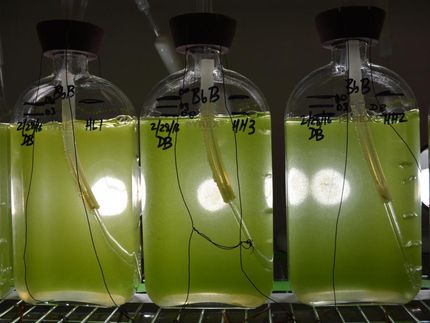Use it or lose it? Researchers investigate the dispensability of our DNA
Our genome contains many genes encoding proteins that are similar to those of other organisms, suggesting evolutionary relationships; however, protein-coding genes account for only a small fraction the genome, and there are many other DNA sequences that are conserved across species. What are these sequences doing, and do we really need them at all? In a study researchers have delved into this mystery and found that evolution has actively kept them in our genome.
Before the human genome was sequenced, researchers estimated the genome might contain upwards of 140,000 protein-coding genes, but surprisingly, sequencing revealed only about 20,000, accounting for less than 2% of the entire genome. Previously, Dr. Gill Bejerano of Stanford University found that lurking within the other 98% of the genome are stretches of sequences, known as ultraconserved elements, which are identical between humans and animals such as rodents and chickens, even though hundreds of millions of years of independent evolution separates them.
Other evidence has suggested that ultraconserved sequences can harbor critical functions, such as regulation of the activity of certain genes. Yet research in this field has produced laboratory results that are seemingly in disagreement: some ultraconserved elements can be deleted from the mouse genome and produce no observable effect on mice. Bejerano cautions that laboratory experiments such as these may not be able to detect slow evolutionary forces at work. “With this in mind, we set out to examine the genomic data, much as someone would examine archaeological data, in search of similar deletion events that have happened naturally, and more importantly, were retained in the wild.”
“An analogy I like to entertain is that of plate tectonics: a fraction of the phenomena may be strong enough to be directly measured by our instruments, but to appreciate its full magnitude we must dig into the geological record,” said Bejerano. “This digging into the genomic record is what our current work was all about.”
Bejerano and graduate student Cory McLean studied the genomes of six mammals, investigating ultraconserved elements that are shared between primates and closely related mammals, were present in the ancestor of modern rodents, but have been lost in the rodent lineage more recently. The researchers found that the genomic evidence supports an important biological role for ultraconserved elements, as well as thousands of other non-coding elements that are resistant to deletion. “The functional importance of ultraconserved elements is reinforced by the observation that the elements are rarely lost in any species,” said McLean. “In fact, they are over 300-fold less likely to be lost than genomic loci which evolve neutrally in our genome.”
Bejerano explained that while loss of some elements may have a significant impact on the fitness of a species and the loss of other elements might be harder to detect in the laboratory, nearly all changes to these regions are picked up by evolution and swept out of the population.
“Perhaps our most striking observation is one of sheer magnitude,” Bejerano said. “Our work highlights how essential these dozens of thousands of regions are to the natural evolution of a species even as their actual functions remain, at large, a mystery.”
Original publication: McLean, C., and Bejerano, G. Dispensability of mammalian DNA. Genome Res., October 2, 2008
Most read news
Other news from the department science

Get the analytics and lab tech industry in your inbox
From now on, don't miss a thing: Our newsletter for analytics and lab technology brings you up to date every Tuesday. The latest industry news, product highlights and innovations - compact and easy to understand in your inbox. Researched by us so you don't have to.





![[Fe]-hydrogenase catalysis visualized using para-hydrogen-enhanced nuclear magnetic resonance spectroscopy](https://img.chemie.de/Portal/News/675fd46b9b54f_sBuG8s4sS.png?tr=w-712,h-534,cm-extract,x-0,y-16:n-xl)



















































